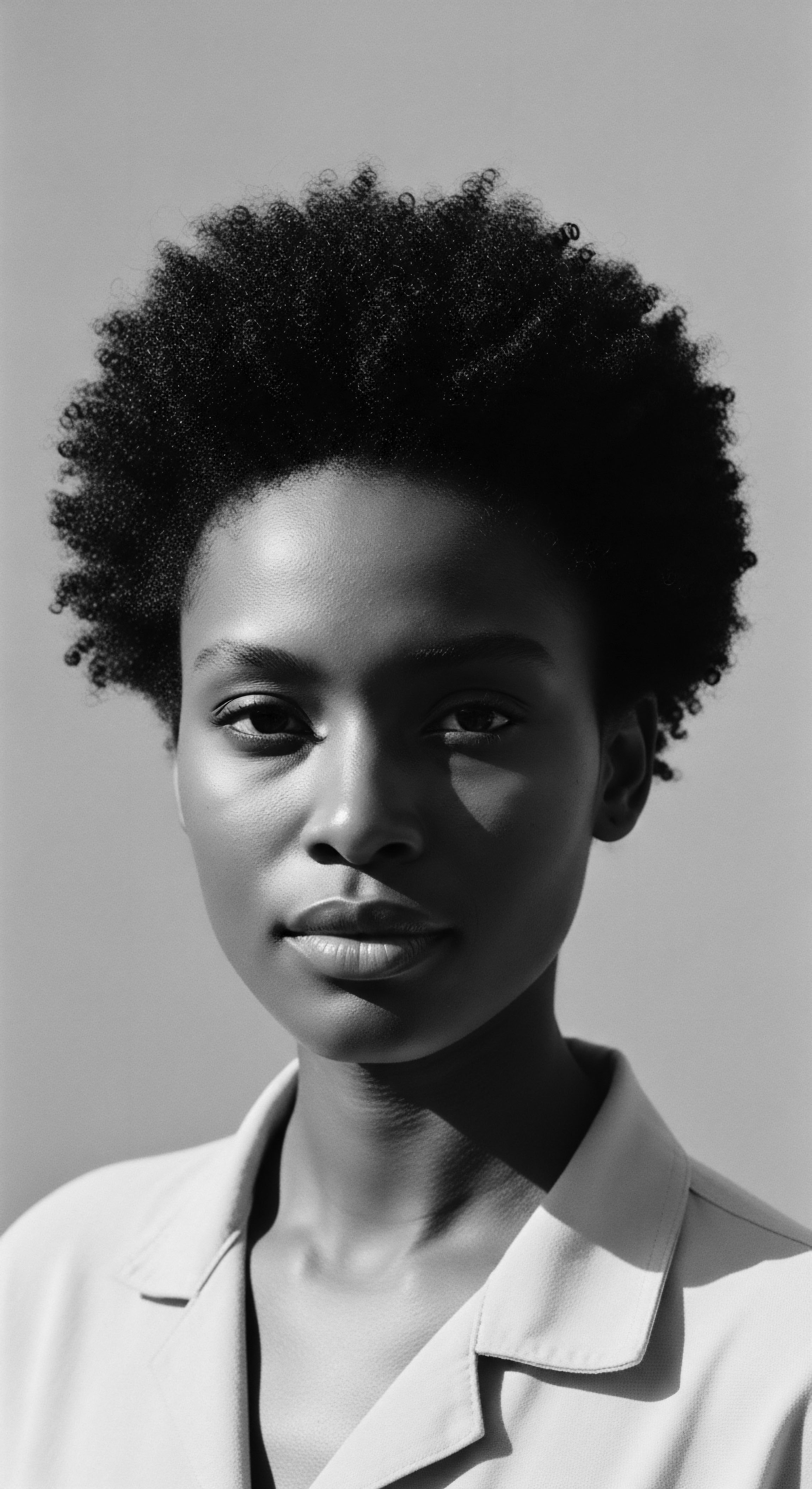
Fundamentals
The concept of Coil Mechanics, at its simplest interpretation, speaks to the inherent architectural design and reactive behaviors of hair strands that exhibit a helical or spiraled formation. This foundational understanding acknowledges that hair, particularly textured hair, does not descend from the scalp in a straight, linear path but rather describes a curvilinear trajectory, forming distinct coils, curls, and waves. This initial designation offers a gateway for individuals new to the subject, inviting them to consider the hair fiber not merely as a decorative element but as a dynamic structure with its own unique physical principles.
From the very moment a strand emerges from its follicular dwelling, its ultimate shape and response to external forces are largely predetermined by the follicle’s curvature. A follicle that is perfectly round tends to yield straight hair, while an increasingly oval or flattened follicle produces hair that spirals and bends. This fundamental biological blueprint is the genesis of Coil Mechanics, laying the groundwork for how a strand will interact with moisture, tension, and manipulation. The distinction between straight and coiled hair is not a superficial one; it signals a divergence in internal architecture and external presentation, each possessing its own set of care requirements and ancestral wisdom.
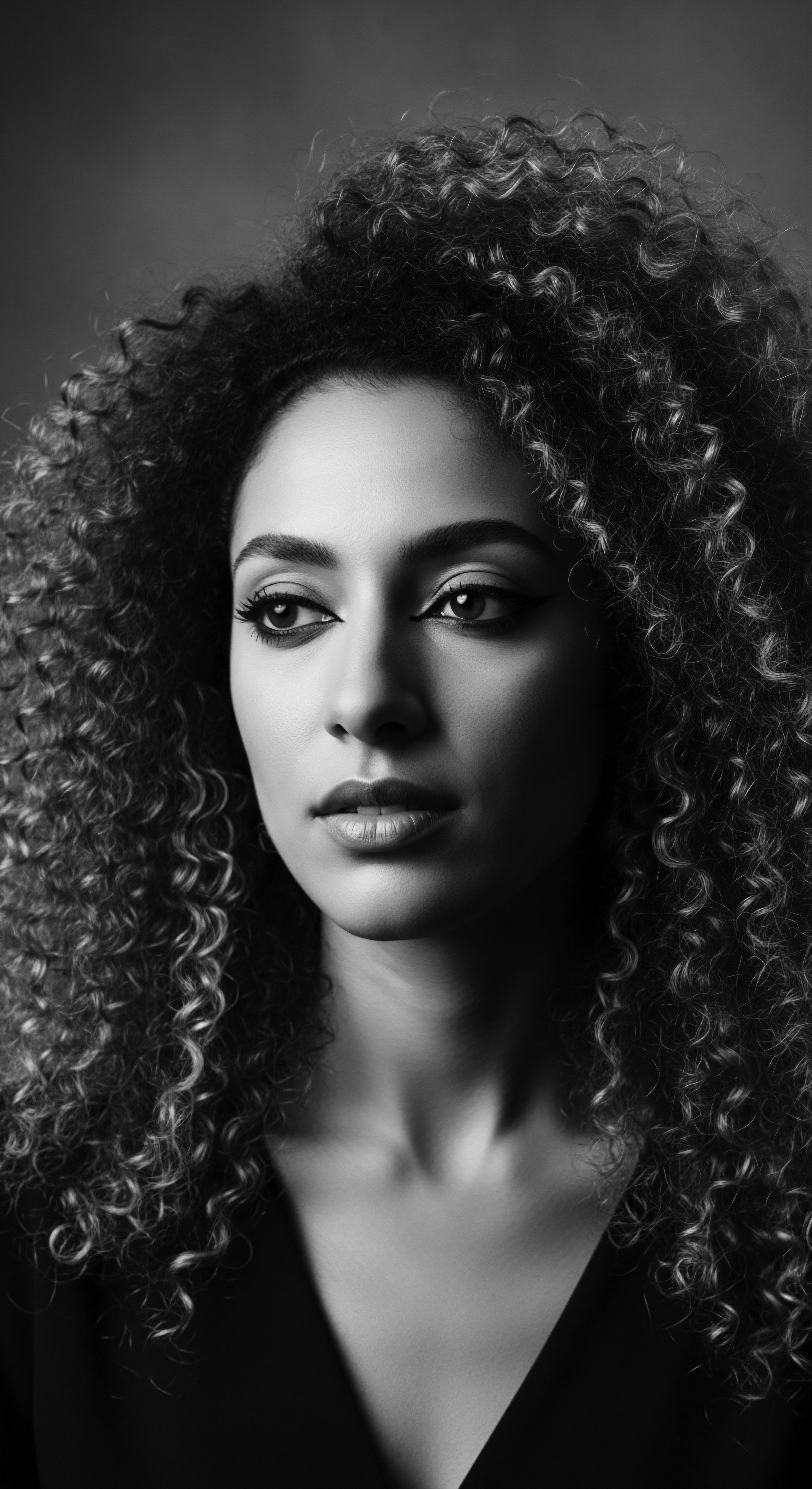
The Hair Strand’s Blueprint
Each individual hair strand, a testament to nature’s artistry, possesses a distinct blueprint that dictates its journey from root to tip. The very shape of the follicle—the tiny pocket in the scalp from which the hair grows—serves as the initial sculptor of the strand’s form. A follicle that is round or only subtly oval produces hair that grows in a relatively straight line.
As the follicle becomes more elliptical or crescent-shaped, the hair it generates begins to coil, forming the intricate patterns we recognize as waves, curls, and coils. This initial formation is a profound aspect of Coil Mechanics, as it establishes the intrinsic nature of the hair, a nature that ancestral communities intuitively recognized and honored.
This biological reality means that textured hair, by its very composition, possesses a unique set of structural characteristics. The way keratin proteins are distributed within the hair shaft, and the very angle at which the hair emerges from the scalp, contribute to its spiraled path. Understanding this inherent blueprint moves beyond simple categorization of hair types; it delves into the very core of why coiled hair behaves as it does, why it may be more prone to dryness, or why it possesses such remarkable elasticity.
Coil Mechanics, at its core, is the study of the inherent spiraled architecture and responsive nature of textured hair, stemming directly from the unique curvature of its follicular origin.
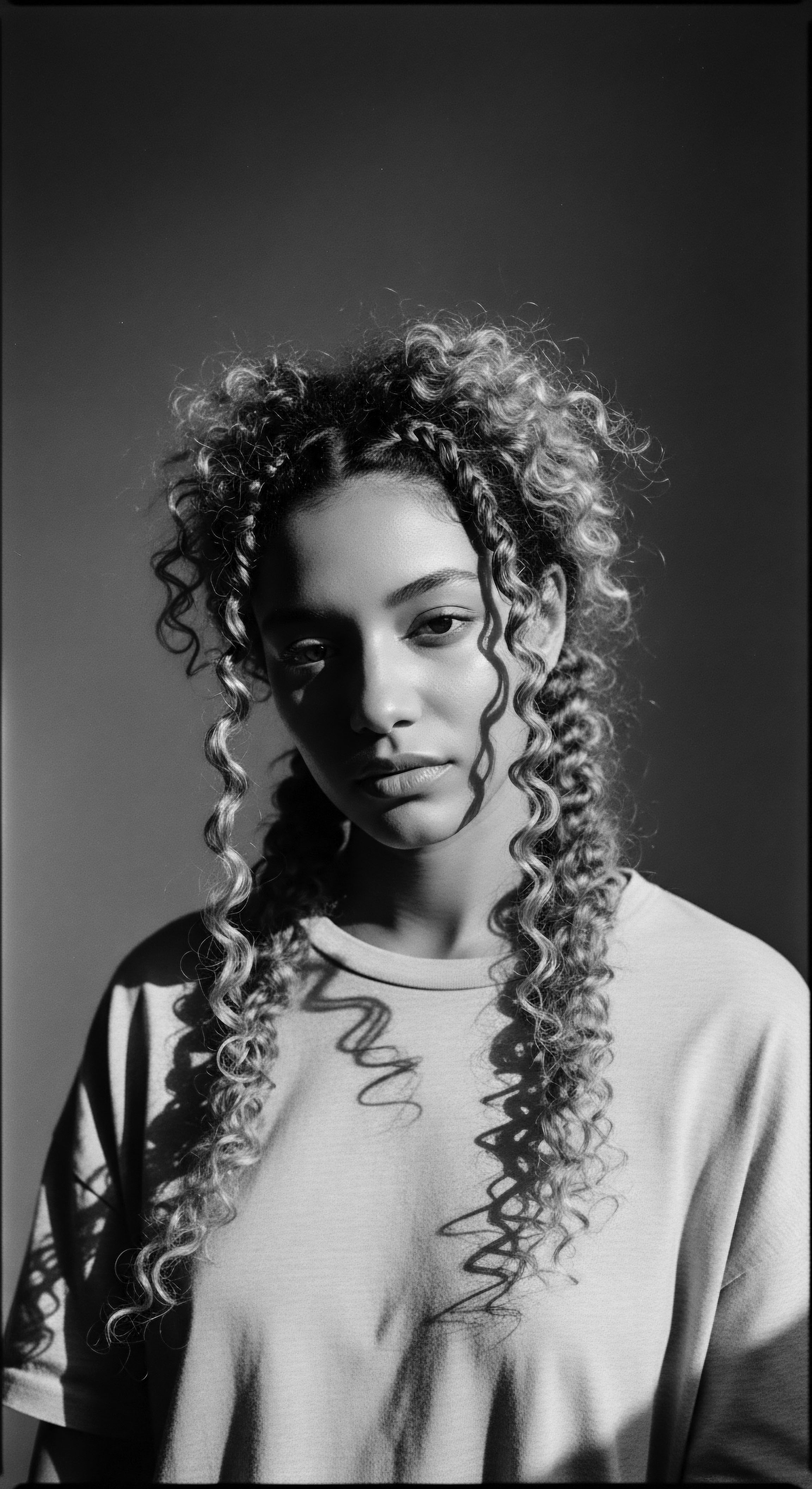
Early Observations of Hair Form
Long before the advent of microscopes or molecular biology, ancient communities across the globe, particularly those with a prevalence of textured hair, possessed an profound understanding of hair’s varied forms. Their comprehension of Coil Mechanics was not articulated in scientific jargon, but rather in the sophisticated practices and rituals passed down through generations. They observed how certain hair types retained moisture differently, how they responded to humidity, or how they could be manipulated into elaborate styles without breakage. This observational knowledge formed the bedrock of traditional hair care, a heritage of wisdom deeply connected to the hair’s natural disposition.
Consider the practices of early African civilizations, where hair was not merely an aesthetic adornment but a profound marker of identity, status, and spiritual connection. The way hair was braided, twisted, or sculpted demonstrated an implicit recognition of its coiled nature and how best to work with its unique properties. Tools crafted from natural materials, and preparations derived from plants, were developed to cleanse, nourish, and protect these intricate coil patterns. This ancient wisdom, rooted in centuries of lived experience and keen observation, provides a powerful testament to the enduring human connection with Coil Mechanics.
- Follicle Shape ❉ The primary determinant of a hair strand’s coil pattern, ranging from round (straight) to highly elliptical (tightly coiled).
- Keratin Distribution ❉ The uneven distribution of keratin proteins within the hair shaft contributes to the helical twist of coiled hair.
- Hair Angle ❉ The angle at which the hair emerges from the scalp influences its initial direction and subsequent curl formation.

Intermediate
Expanding upon the foundational understanding, the intermediate interpretation of Coil Mechanics delves into the dynamic interplay of a hair strand’s internal structure and its external responses. This goes beyond merely recognizing a coil; it involves comprehending the subtle yet significant properties that govern its behavior ❉ its ability to stretch and return, its capacity to absorb and retain moisture, and its unique vulnerability to external forces. For those seeking a more comprehensive grasp, this level of inquiry reveals the inherent wisdom embedded within ancestral hair care traditions, which often intuitively addressed these very characteristics.
The mechanical properties of a coiled strand are distinct. Its spiraled architecture means that it experiences tension and compression differently from straight hair. This structure also affects how light reflects off its surface, often leading to a perception of less shine, a characteristic that historically contributed to misconceptions about its health or vibrancy. A deeper exploration of Coil Mechanics thus necessitates a recognition of these unique physical attributes and their historical implications within the broader narrative of textured hair.

The Living Fiber ❉ Elasticity and Porosity
A truly comprehensive appreciation of Coil Mechanics demands an examination of hair’s remarkable living qualities, particularly its elasticity and porosity. Elasticity refers to a hair strand’s capacity to stretch and return to its original length without breakage. Coiled hair, by its very nature, possesses a unique elasticity due to its spring-like configuration.
This inherent stretch allows for diverse styling possibilities, from intricate braids that hold their shape to voluminous puffs that defy gravity. However, this elasticity also means coiled hair can be more susceptible to overstretching if not handled with gentle consideration, a truth well understood by generations of hair stylists and caregivers.
Porosity, conversely, speaks to the hair’s ability to absorb and retain moisture. The outer layer of the hair, the cuticle, is composed of overlapping scales. In textured hair, these scales may be naturally raised or unevenly laid due to the twists and turns of the strand.
This can lead to increased porosity, meaning the hair readily absorbs water but also releases it quickly, often resulting in dryness. Ancestral practices, such as the use of natural oils and butters, served as ingenious solutions to manage this inherent characteristic, creating protective barriers that sealed moisture within the hair shaft.
Understanding the nuanced elasticity and porosity of coiled hair unlocks the historical efficacy of ancestral care rituals, which intuitively worked with these intrinsic properties.
The journey of understanding Coil Mechanics at this level involves connecting these scientific properties to the lived experience of textured hair. It illuminates why certain traditional ingredients or techniques were so effective, not merely by chance, but by their direct interaction with the hair’s physical and chemical composition. This historical validation of ancestral wisdom stands as a powerful testament to the deep knowledge passed down through generations.

Ancestral Rhythms of Care
The rhythms of ancestral hair care were deeply intertwined with an intuitive grasp of Coil Mechanics. From the humid climates of West Africa to the dry expanses of the Caribbean, communities developed specific routines that respected the hair’s unique needs. These practices were not random acts of grooming; they were deliberate engagements with the hair’s inherent structure, its tendency towards dryness, and its capacity for protective styling. The frequent application of plant-based oils, the use of water-based infusions, and the practice of intricate braiding or twisting patterns all served to maintain the hair’s moisture balance and integrity.
Consider the widespread use of shea butter (Vitellaria paradoxa) across West Africa. Its rich emollient properties provided a protective layer, mitigating moisture loss from porous coiled strands. Similarly, the use of aloe vera (Aloe barbadensis miller) or flaxseed (Linum usitatissimum) gels in various diaspora communities offered slip for detangling and definition for coil patterns, preventing breakage during manipulation. These were not simply cosmetic applications; they were functional responses to the very mechanics of coiled hair, passed down as embodied knowledge.
| Traditional Ingredient Shea Butter |
| Ancestral Application Applied to hair and scalp for moisture and protection. |
| Coil Mechanics Benefit (Modern Understanding) Seals cuticle, reduces moisture loss in porous coils, provides emollience. |
| Traditional Ingredient Coconut Oil |
| Ancestral Application Used for pre-shampoo treatments and styling. |
| Coil Mechanics Benefit (Modern Understanding) Penetrates hair shaft, reduces protein loss, provides lubrication for detangling. |
| Traditional Ingredient Aloe Vera |
| Ancestral Application Applied as a gel for styling and scalp soothing. |
| Coil Mechanics Benefit (Modern Understanding) Provides slip for detangling, defines coil patterns, offers hydration. |
| Traditional Ingredient Flaxseed |
| Ancestral Application Boiled to create a gel for styling and hold. |
| Coil Mechanics Benefit (Modern Understanding) Offers natural hold and definition without stiffness, reduces frizz, supports coil integrity. |
| Traditional Ingredient These ancestral remedies demonstrate a profound, intuitive understanding of coiled hair's needs, validated by contemporary scientific inquiry. |

The Interplay of Environment and Structure
The environment in which textured hair exists profoundly influences its Coil Mechanics. Humidity, for example, causes the hair to absorb water, leading to the hydrogen bonds within the keratin structure to temporarily rearrange. For coiled hair, this often results in increased frizz and shrinkage, as the coils tighten and contract.
Conversely, dry environments can strip moisture, leaving coils brittle and prone to breakage. Ancestral communities, living in diverse climates, developed adaptive strategies that acknowledged this interplay.
Protective styling, such as braids, twists, and cornrows, served not only as expressions of identity and artistry but also as practical responses to environmental challenges. These styles minimized exposure to harsh elements, reduced daily manipulation, and helped to retain moisture, thereby preserving the integrity of the hair’s delicate coil structure. This deep connection between environmental awareness and hair care practices forms a significant aspect of Coil Mechanics, highlighting how human ingenuity adapted to work harmoniously with nature.

Academic
The academic delineation of Coil Mechanics transcends surface-level observation, probing the intricate biophysical phenomena and profound sociocultural implications that shape the existence of textured hair. It is a rigorous examination, drawing from the fields of trichology, materials science, anthropology, and sociology, to provide a comprehensive explanation of how hair’s helical structure dictates its mechanical behavior and, concomitantly, its historical and contemporary meaning within diverse communities. This sophisticated understanding challenges simplistic categorizations, instead revealing a complex interplay of genetic predisposition, environmental interaction, and the deeply embedded cultural narratives that have long surrounded coiled hair.
The precise meaning of Coil Mechanics, from an academic vantage point, is the systematic investigation into the inherent physical properties and responsive dynamics of hair fibers characterized by a non-linear, spiraled growth pattern, encompassing their elasticity, tensile strength, porosity, and susceptibility to environmental stressors, all contextualized within the historical and cultural experiences of populations predominantly possessing such hair textures. This analytical lens scrutinizes not only the biological mechanisms that generate coils but also the profound societal structures and ancestral wisdom that have emerged in response to these unique hair characteristics.
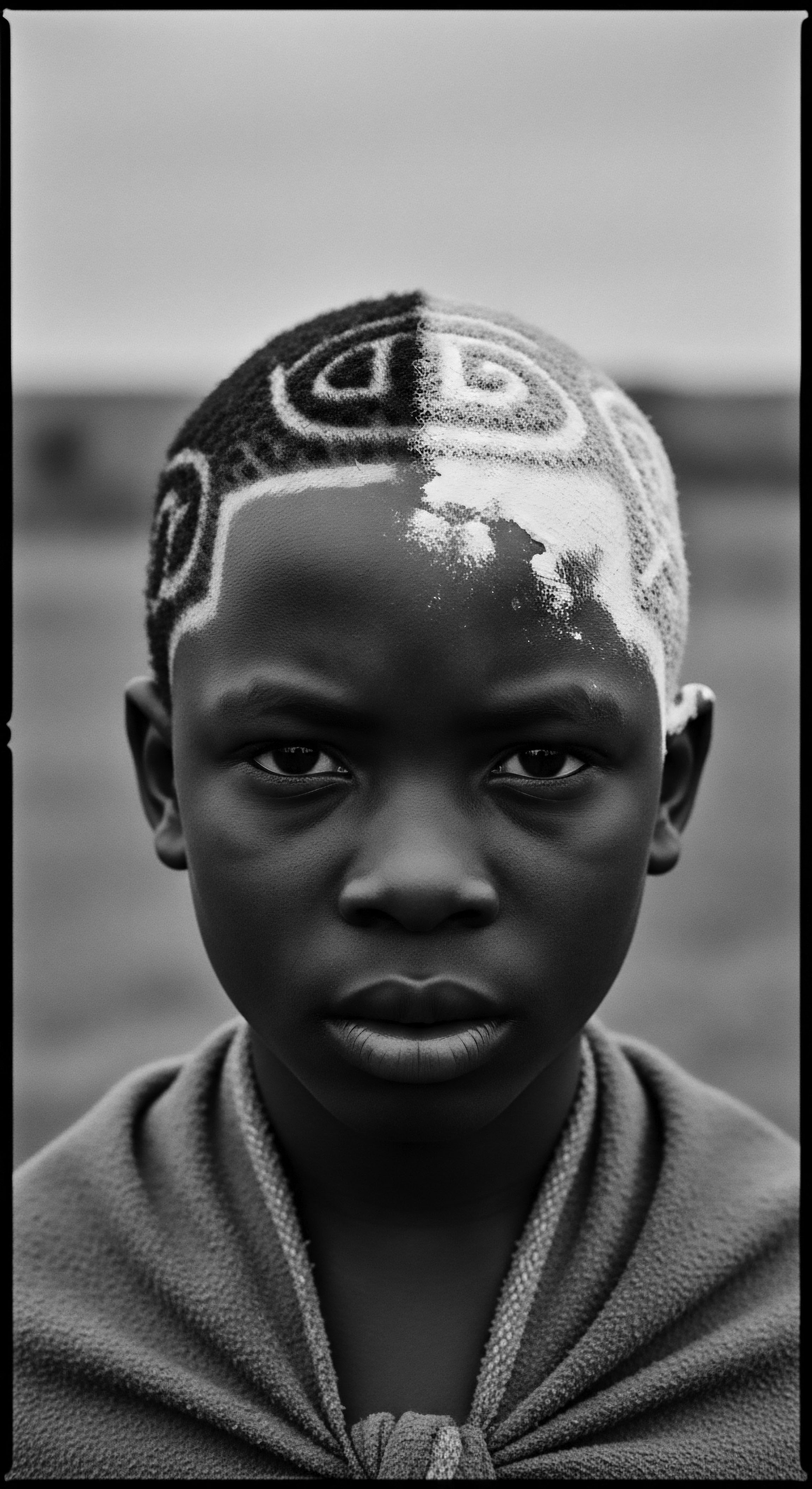
Biophysical Delineations of the Helical Form
The biophysical underpinnings of Coil Mechanics are rooted in the asymmetrical growth of keratinocytes within the hair follicle. Unlike straight hair, where cell division occurs uniformly around a cylindrical lumen, coiled hair follicles are typically elliptical or kidney-shaped, leading to an uneven proliferation of cells on opposing sides of the hair shaft. This differential keratinization results in a hair strand with varying growth rates along its circumference, compelling it to twist and curl as it elongates. The distribution of specific keratin proteins, such as KRT31 and KRT81, and their associated disulfide bonds, plays a crucial role in stabilizing this helical configuration, imparting both resilience and a characteristic vulnerability to mechanical stress.
The very arrangement of cortical cells within the hair shaft, with their distinct orthocortical and paracortical regions, contributes to the spiraled trajectory. The orthocortex, typically found on the inner curve of a coil, is more elastic, while the paracortex, on the outer curve, exhibits greater rigidity. This intrinsic asymmetry generates a bending moment that drives the formation of coils. Understanding these molecular and cellular intricacies provides a robust scientific basis for the unique properties of textured hair, from its volume and springiness to its propensity for knotting and fragility if mishandled.

Sociocultural Interpretations of Coiled Identity
The academic inquiry into Coil Mechanics extends beyond mere biology, delving into the profound sociocultural interpretations that have shaped the lived experiences of individuals with textured hair. For centuries, hair has served as a powerful signifier of identity, status, and cultural belonging, particularly within African and diasporic communities. The very definition of “good hair” or “bad hair” often became inextricably linked to the degree of coil or curl, a social construct perpetuated by colonial beauty standards and internalized biases. This historical context illuminates the profound impact of Coil Mechanics on self-perception and communal recognition.
The act of wearing natural coils, once a source of societal prejudice and economic disadvantage, has undergone a significant re-evaluation. This shift is not merely a trend but a powerful reclamation of ancestral heritage and a celebration of the inherent beauty of coiled hair. Academic studies in cultural anthropology and sociology reveal how hair practices, including the maintenance and styling of coils, served as acts of resistance and affirmation against oppressive norms. The meaning of Coil Mechanics, in this light, is not solely about physics; it is about the assertion of selfhood and the continuation of cultural legacies.
- Cultural Significance ❉ Coiled hair often serves as a powerful marker of ethnic identity, social status, and spiritual connection in various cultures.
- Historical Prejudice ❉ Colonial beauty standards historically denigrated coiled textures, leading to widespread practices aimed at altering natural hair.
- Reclamation Movement ❉ The contemporary natural hair movement represents a profound assertion of self-acceptance and ancestral pride, directly linked to valuing Coil Mechanics.
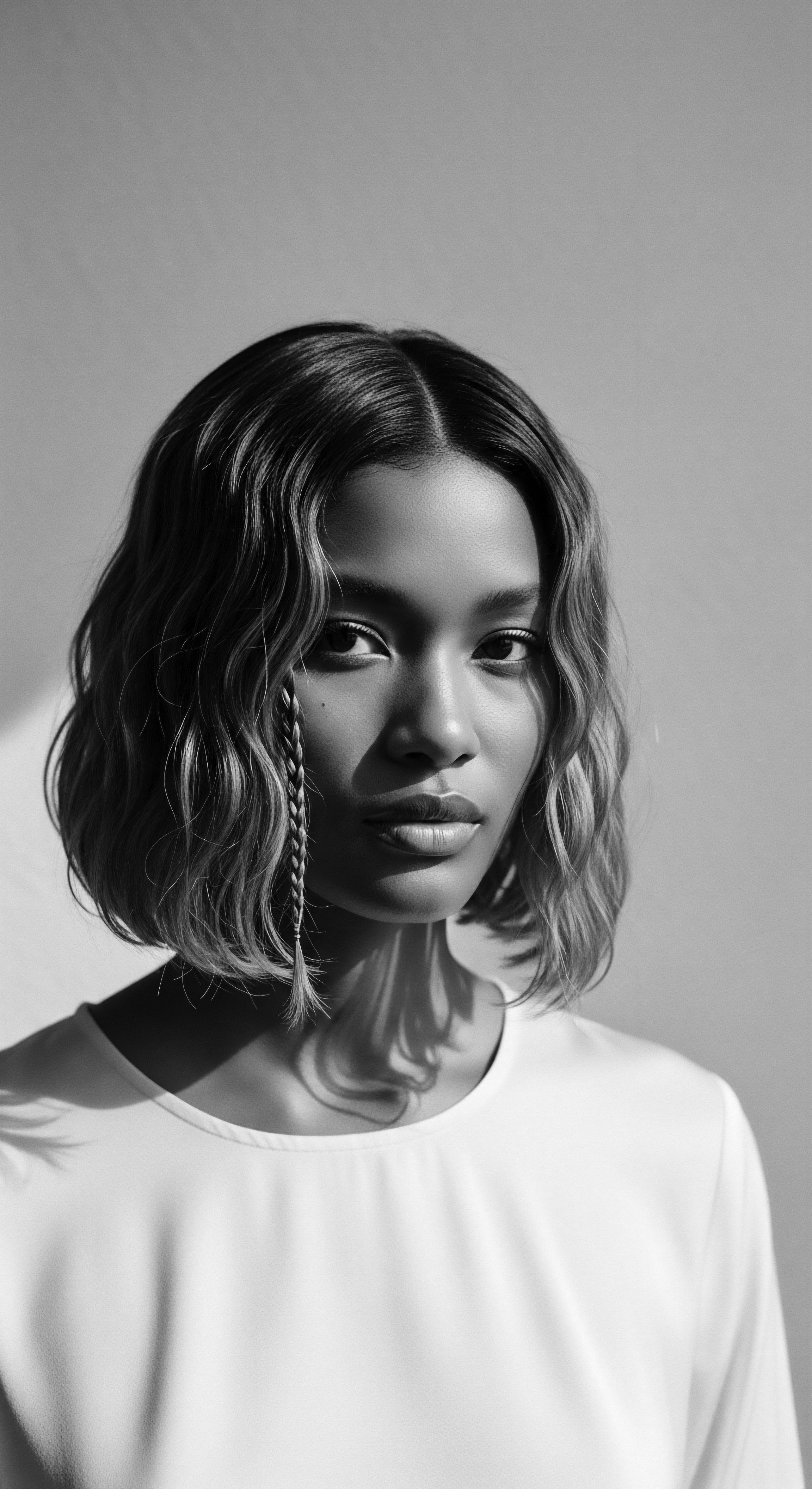
Historical Trauma and the Reclaiming of Coil Integrity
The history of textured hair, particularly within Black communities, is inextricably linked to narratives of trauma and resilience, a critical aspect of Coil Mechanics when viewed through an academic lens. The pervasive pressure to conform to Eurocentric beauty ideals led to widespread practices of chemical straightening, a process that fundamentally altered the hair’s coiled structure by breaking its disulfide bonds. This chemical assault, often initiated at young ages, had significant physical consequences for hair health, leading to breakage, scalp irritation, and in some cases, permanent damage. Beyond the physical, the psychological toll of internalizing a belief that one’s natural coils were “unprofessional” or “undesirable” was profound.
However, the journey of reclaiming Coil Mechanics has been a powerful counter-narrative. This movement is not just about aesthetics; it is about decolonizing beauty standards and affirming the inherent perfection of naturally spiraled hair. A compelling example of this profound connection to ancestral understanding and resilience can be observed in the traditional hair practices of the Mangbetu people of the Democratic Republic of Congo. Their elaborate hair sculptures, known as the “pedje,” required an exceptional, intuitive understanding of hair’s tensile strength, elasticity, and how to manipulate its natural coiled structure to achieve monumental forms.
These intricate styles, often incorporating extensions and frameworks, were not merely aesthetic but served as profound cultural markers of status, beauty, and identity (Thompson, 2001). The longevity and architectural precision of these styles demonstrate an ancestral grasp of what we now term Coil Mechanics, long before modern scientific instruments could measure keratin bonds or follicular asymmetry. They worked with the hair’s inherent properties, not against them, creating wonders that honored the natural fiber, a testament to sophisticated, embodied knowledge passed through generations.
The reclamation of Coil Mechanics represents a profound act of decolonization, challenging historical beauty standards and affirming the intrinsic value of naturally spiraled hair.
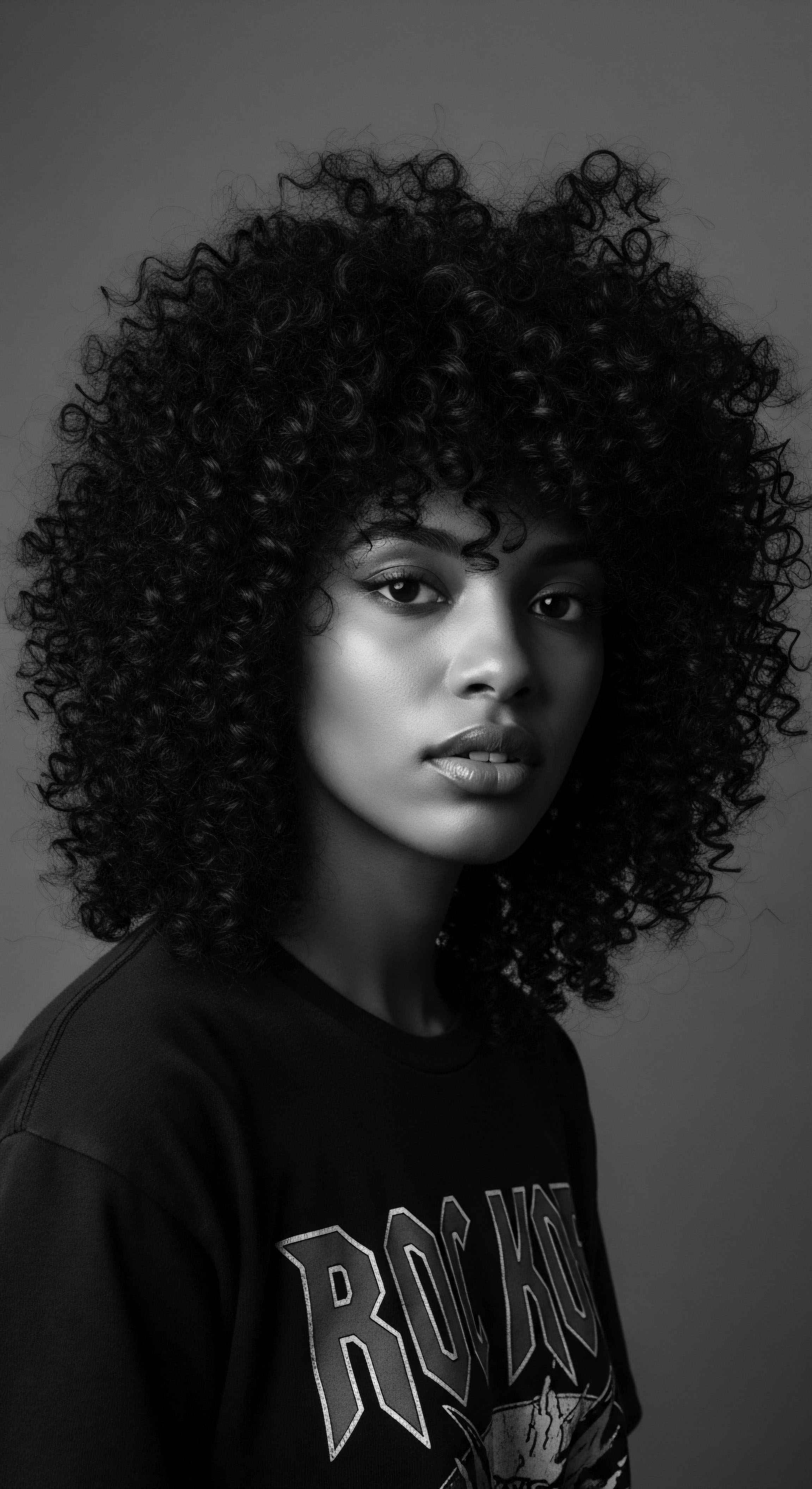
Ancestral Ingenuity ❉ A Scientific Reappraisal
An academic reappraisal of Coil Mechanics reveals that ancestral ingenuity often mirrored, or even anticipated, modern scientific understanding. Traditional hair care practices, developed through generations of trial and observation, were remarkably effective in addressing the unique properties of coiled hair. The consistent use of natural humectants, emollients, and protein-rich plant extracts demonstrates an intuitive knowledge of hair porosity and the need for moisture retention and structural reinforcement.
For instance, the historical use of specific clays or plant-based cleansers, which gently lifted impurities without stripping natural oils, reflects an understanding of the delicate balance required to maintain coil integrity. The practice of sectioning hair for detangling, or the systematic application of oils from root to tip, speaks to an awareness of the hair’s vulnerability to mechanical stress and the need for lubrication. These seemingly simple techniques, when viewed through the lens of modern hair science, reveal a sophisticated, empirical approach to Coil Mechanics that was deeply integrated into daily life and cultural rituals. The very essence of these practices was to support the natural inclinations of the hair, allowing its unique structure to flourish.

Reflection on the Heritage of Coil Mechanics
The journey through Coil Mechanics, from its elemental biology to its complex cultural narratives, culminates in a profound meditation on the enduring heritage of textured hair. It is a narrative woven not with literal threads, but with the very essence of human experience, resilience, and an unwavering connection to ancestral wisdom. The spiraled strand, once dismissed or deemed difficult, now stands as a powerful symbol of identity, a testament to the beauty that arises from embracing one’s inherent design. The ‘Soul of a Strand’ ethos finds its truest expression here, recognizing that each coil carries the echoes of generations, a living archive of care, creativity, and enduring spirit.
This exploration is more than an academic exercise; it is an invitation to reconnect with a legacy. To understand Coil Mechanics is to understand the ingenuity of those who came before us, who instinctively knew how to nourish and celebrate hair in its natural state. It is to recognize that the unique needs of coiled hair are not deficiencies, but rather calls for a specific, gentle reverence.
As we look to the future of hair care, the deepest insights will surely stem from this rich wellspring of heritage, validating ancient practices with modern knowledge, and affirming the profound value of every single coil. The story of Coil Mechanics is a continuous one, ever unfolding, ever reminding us of the deep connection between our hair, our history, and our very being.
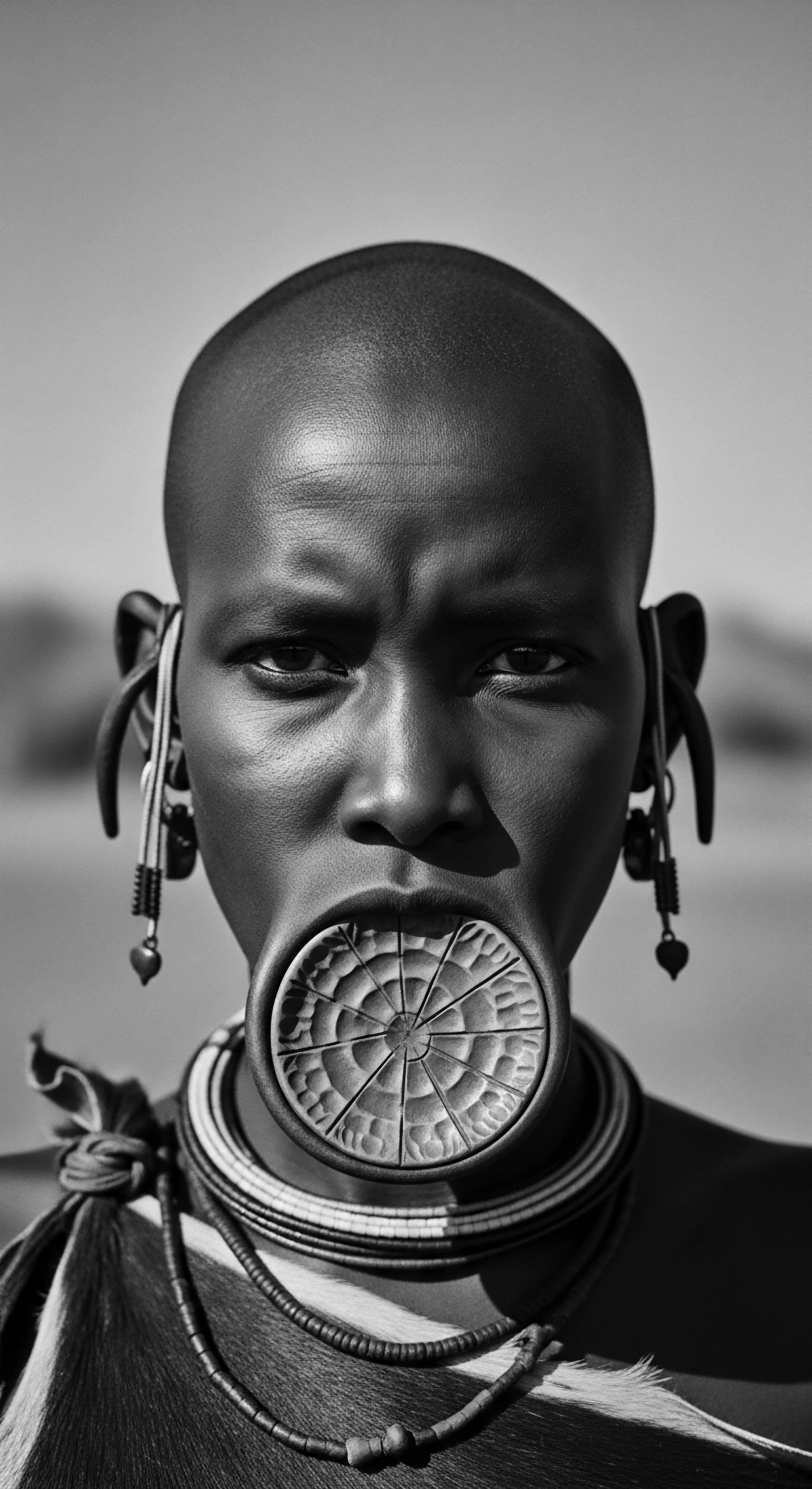
References
- Byrd, A. D. & Tharps, L. L. (2001). Hair Story ❉ Untangling the Roots of Black Hair in America. St. Martin’s Press.
- Robbins, C. R. (2012). Chemical and Physical Behavior of Human Hair. Springer.
- Thompson, R. F. (2001). Flash of the Spirit ❉ African and Afro-American Art and Philosophy. Vintage Books.
- Hooks, B. (1995). Art, Bell Hooks ❉ Black Looks ❉ Race and Representation. South End Press.
- Patton, T. O. (2006). African American Hair ❉ An Exploration of Sociocultural and Historical Aspects. Peter Lang Publishing.
- Mercer, K. (1994). Welcome to the Jungle ❉ New Positions in Black Cultural Studies. Routledge.
- Giddings, P. (1984). When and Where I Enter ❉ The Impact of Black Women on Race and Sex in America. William Morrow.
